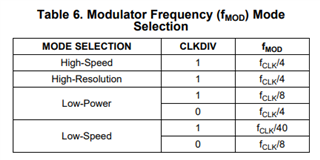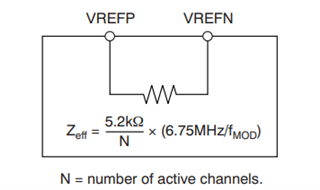Other Parts Discussed in Thread: ADS1278, REF6025
Tool/software:
Dear TI,
In your ADS1278EVM-PDK Application Note, (SBAU436A, Page 9), I noticed you are using a REF5025AIDGKT reference, followed by a buffer amplifier to provide current and some lowpass filtering into the ADS1278 reference input.
In the ADS1278 datasheet, page 38/52 indicates the REF5025AIDGKT reference is connected directly to the ADS1278 reference input. My calculations show that the REF5025AIDGKT reference can supply enough current to the ADS1278 reference in all operating conditions with a minimum Zeff = (5.2 kOhm / 8 channels) = 650 ohms.
Can you tell me why you added the buffer amplifier in the ADS1278EVM-PDG Application Note, (SBAU436A, Page 9) please? I would like to minimize board spins if there is a reason to buffer this reference.
I noted that the TI REF5025 has poor PSRR at typical switching frequencies of a DC-DC converter. Is that the reason?
Thank you,
-Daniel




